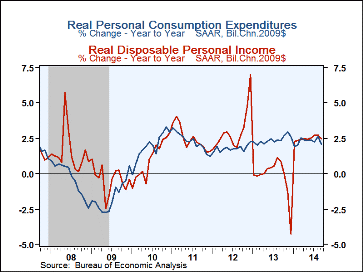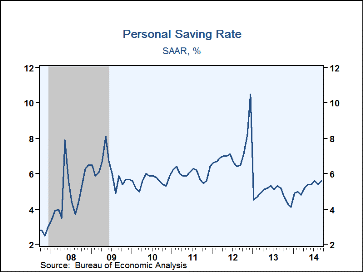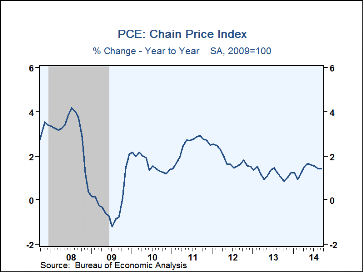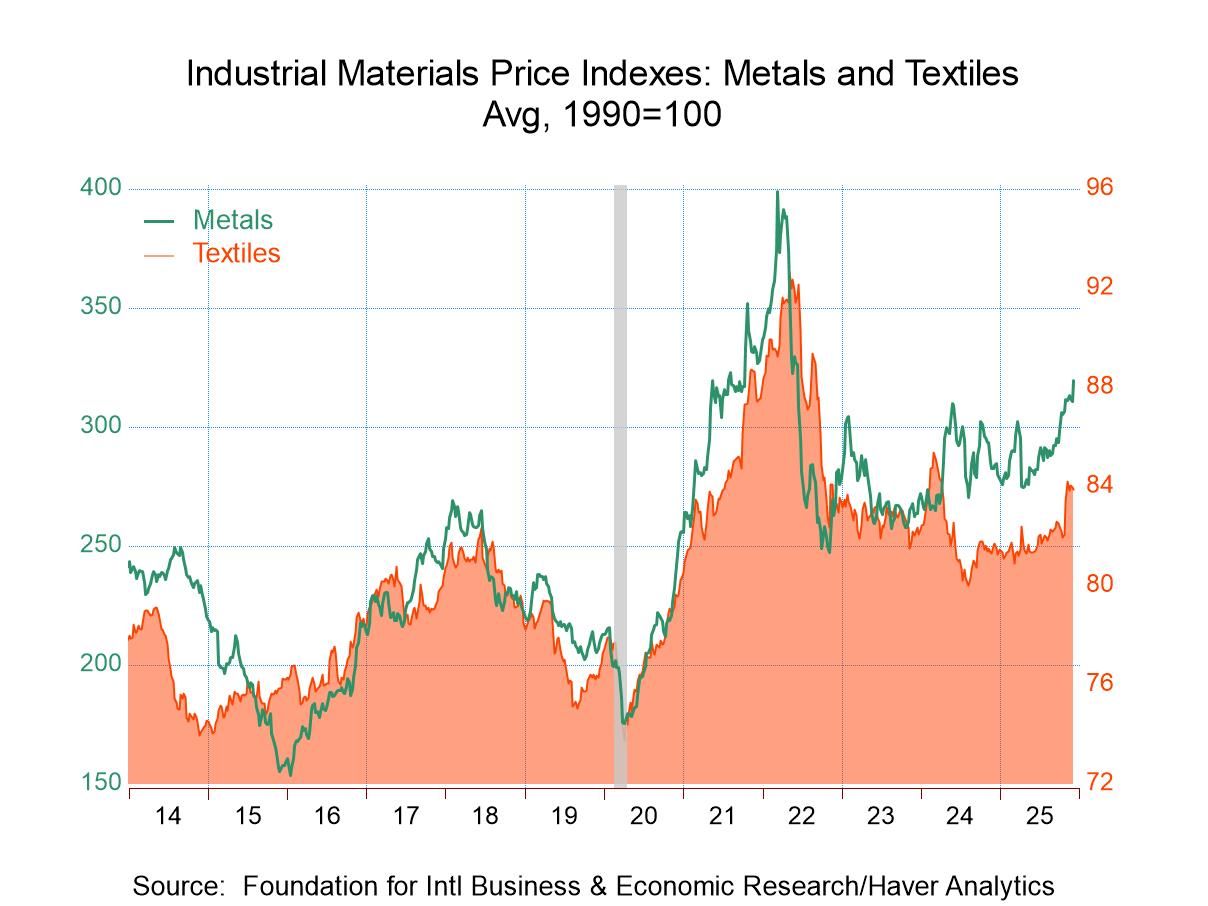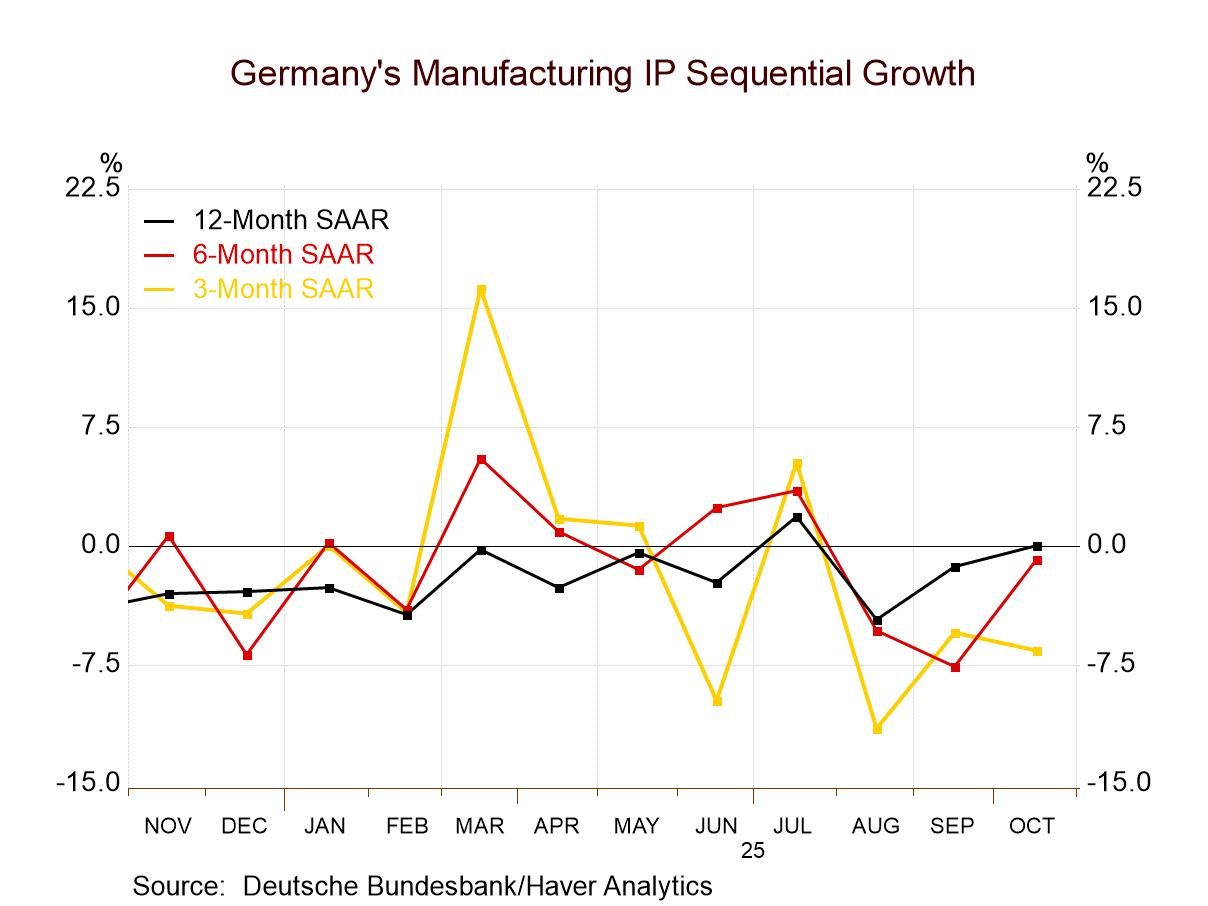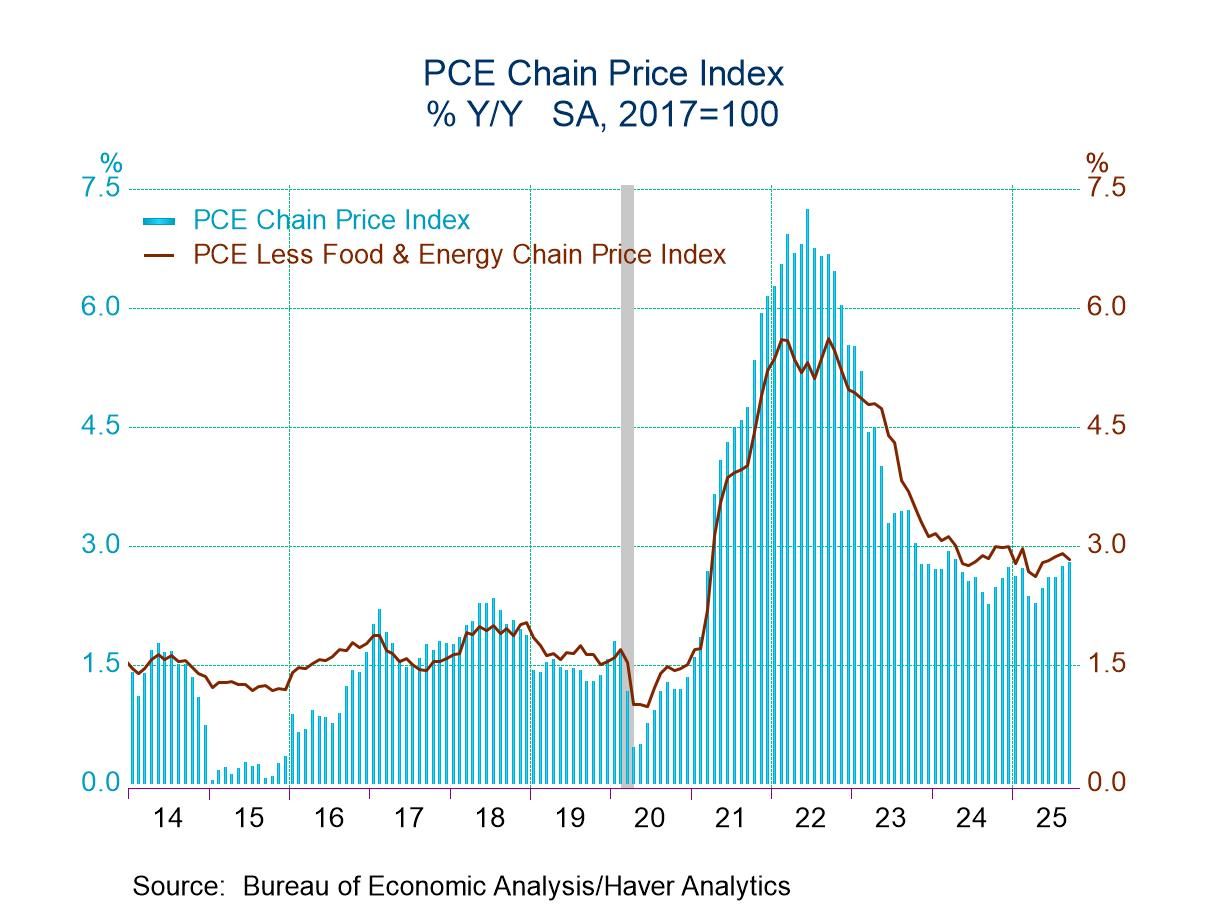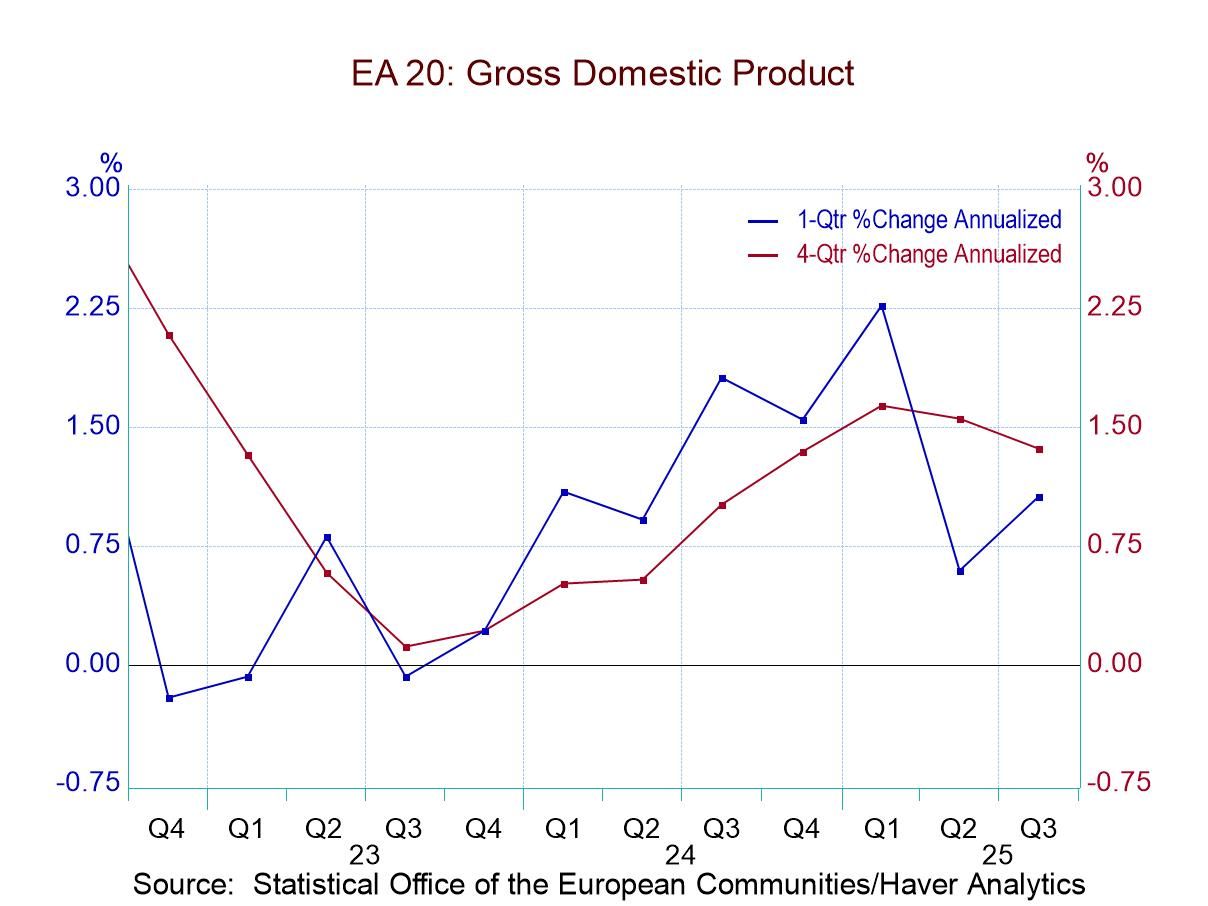 Global| Oct 31 2014
Global| Oct 31 2014U.S. Consumer Spending Declines as Disposable Income Growth Subsides
by:Tom Moeller
|in:Economy in Brief
Summary
Personal consumption expenditures fell 0.2% during September (+3.5% y/y) following an unrevised 0.5% August improvement. A 0.1% uptick had been expected in the Action Economics Forecast Survey. A 5.3% decline (+9.6% y/y) in motor [...]
Personal consumption expenditures fell 0.2% during September (+3.5% y/y) following an unrevised 0.5% August improvement. A 0.1% uptick had been expected in the Action Economics Forecast Survey. A 5.3% decline (+9.6% y/y) in motor vehicle purchases offset a 6.3% rise. Furnishings and durable household equipment spending fell 0.4% (+1.4% y/y), counterbalancing the 0.4% August rise. Apparel purchases fell 0.9% (+1.9% y/y) after a 0.6% increase but services spending added 0.2% (3.9% y/y) to the 0.5% gain. In constant dollars, spending was down 0.2% (+2.1% y/y).
Disposable personal income ticked up just 0.1% (3.9% y/y), the weakest performance since December. In constant dollars, disposable income was unchanged (2.5% y/y). Overall personal income increased 0.2% (4.1% y/y), just short of expectations for a 0.3% rise. Wages & salaries improved 0.2% (5.1% y/y) while rental income gained 0.2% (6.9% y/y). Personal transfer receipts increased 0.3% (5.6% y/y), bolstered by a 0.8% rise in Medicaid income (15.6% y/y). Earnings from dividends rose 0.5% (2.7% y/y). To the downside, interest income fell 0.4% (+0.3% y/y) for the third straight month, while proprietors income slipped 0.1% (+1.6% y/y).
The decline in spending coupled with a rise in income caused the personal saving rate to recover to 5.6%, matching the highest level since December 2012. Personal savings rebounded 4.3% (11.4% y/y) and made up a 3.6% August decline.
The chain price index nudged 0.1% higher last month (1.4% y/y) after a 0.1% dip. Energy prices fell 0.8% (-0.9% y/y) while food prices gained 0.2% (2.5% y/y). Durable goods prices dipped 0.1% (-2.3% y/y) while nondurable prices slipped marginally (+1.0% y/y). Services prices gained 0.1% (2.2% y/y). The price index excluding food & energy edged 0.1% higher (1.5% y/y) for a third straight month.
The personal income & consumption figures are available in Haver's USECON and USNA databases. The consensus expectation figure is in the AS1REPNA database.
| Personal Income & Outlays (%) | Sep | Aug | Jul | Y/Y | 2013 | 2012 | 2011 |
|---|---|---|---|---|---|---|---|
| Personal Income | 0.2 | 0.3 | 0.3 | 4.1 | 2.2 | 5.2 | 6.2 |
| Wages & Salaries | 0.2 | 0.5 | 0.3 | 5.1 | 2.8 | 4.5 | 4.0 |
| Disposable Personal Income | 0.1 | 0.3 | 0.2 | 3.9 | 1.0 | 4.9 | 5.0 |
| Personal Consumption Expenditures | -0.2 | 0.5 | 0.0 | 3.5 | 3.6 | 3.7 | 4.8 |
| Personal Saving Rate | 5.6 | 5.4 | 5.6 | 5.2 (Sep '13) |
4.9 | 7.2 | 6.0 |
| PCE Chain Price Index | 0.1 | -0.1 | 0.1 | 1.4 | 1.2 | 1.8 | 2.5 |
| Less Food & Energy | 0.1 | 0.1 | 0.1 | 1.5 | 1.3 | 1.8 | 1.5 |
| Real Disposable Income | 0.0 | 0.3 | 0.1 | 2.5 | -0.2 | 3.0 | 2.5 |
| Real Personal Consumption Expenditures | -0.2 | 0.5 | -0.0 | 2.1 | 2.4 | 1.8 | 2.3 |
Tom Moeller
AuthorMore in Author Profile »Prior to joining Haver Analytics in 2000, Mr. Moeller worked as the Economist at Chancellor Capital Management from 1985 to 1999. There, he developed comprehensive economic forecasts and interpreted economic data for equity and fixed income portfolio managers. Also at Chancellor, Mr. Moeller worked as an equity analyst and was responsible for researching and rating companies in the economically sensitive automobile and housing industries for investment in Chancellor’s equity portfolio. Prior to joining Chancellor, Mr. Moeller was an Economist at Citibank from 1979 to 1984. He also analyzed pricing behavior in the metals industry for the Council on Wage and Price Stability in Washington, D.C. In 1999, Mr. Moeller received the award for most accurate forecast from the Forecasters' Club of New York. From 1990 to 1992 he was President of the New York Association for Business Economists. Mr. Moeller earned an M.B.A. in Finance from Fordham University, where he graduated in 1987. He holds a Bachelor of Arts in Economics from George Washington University.


